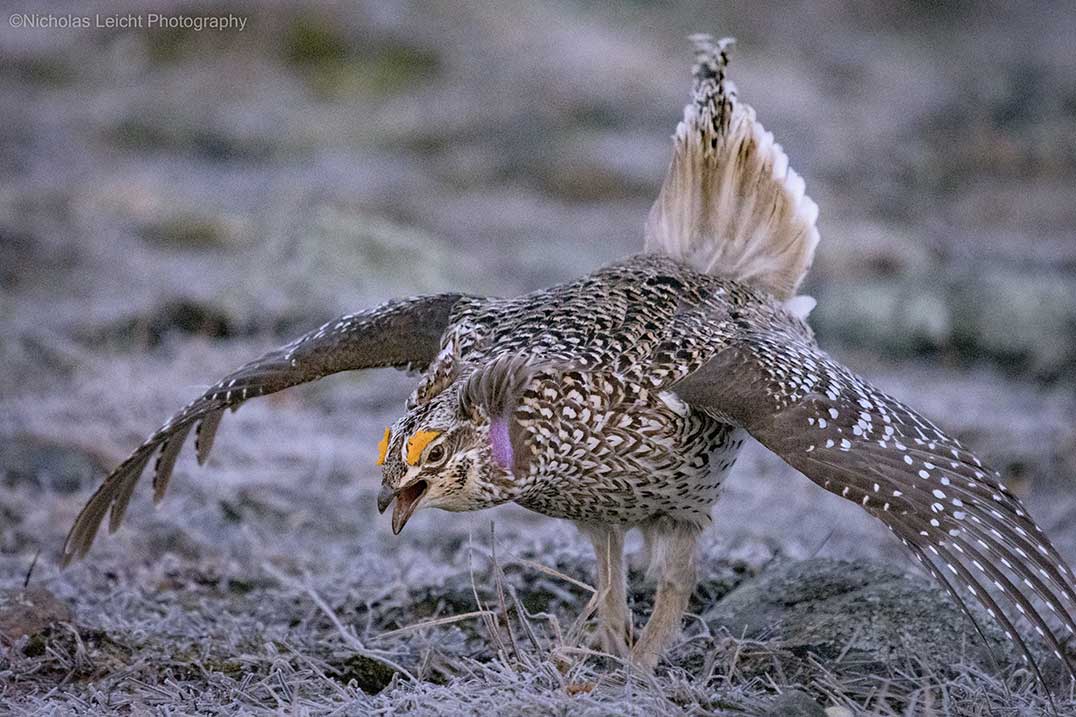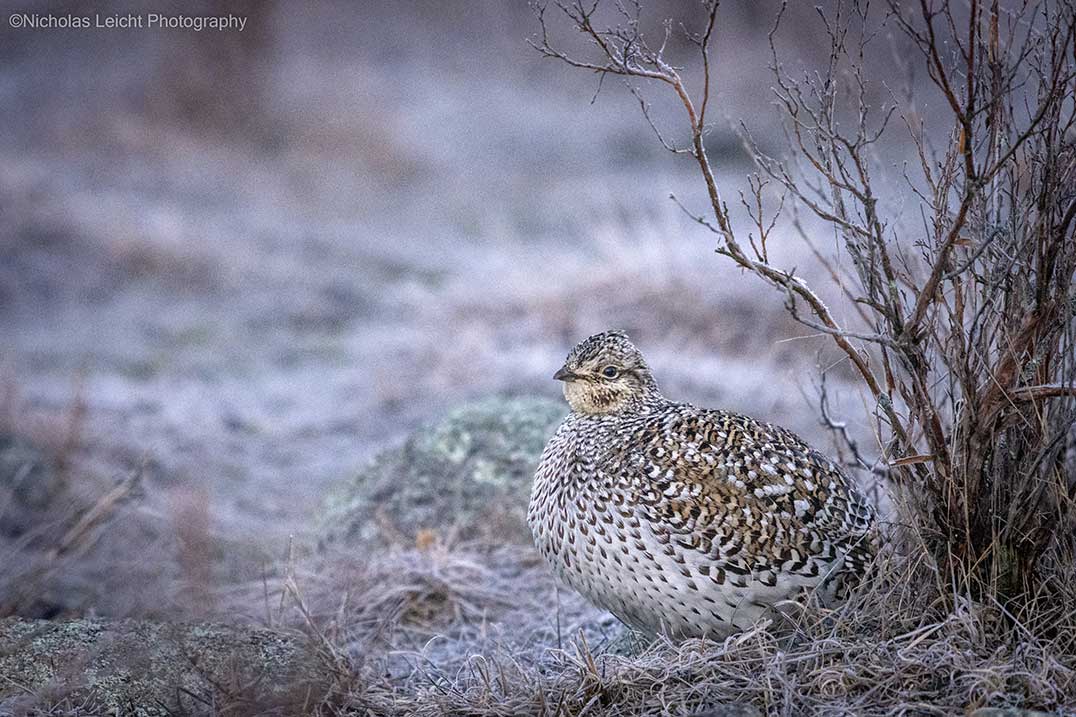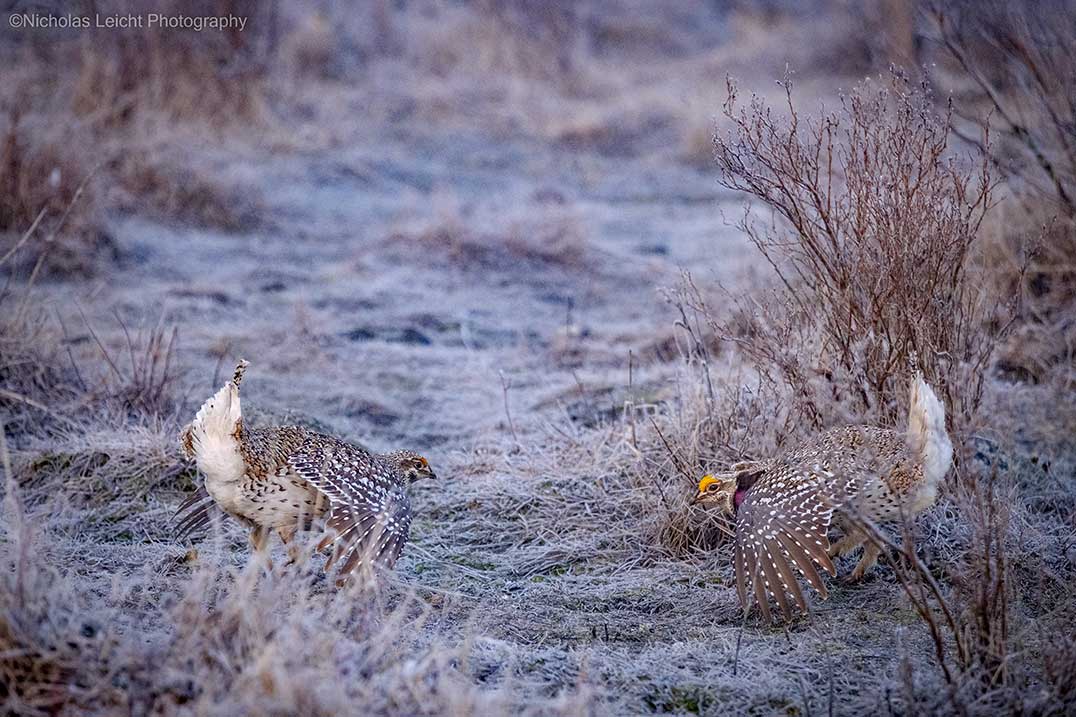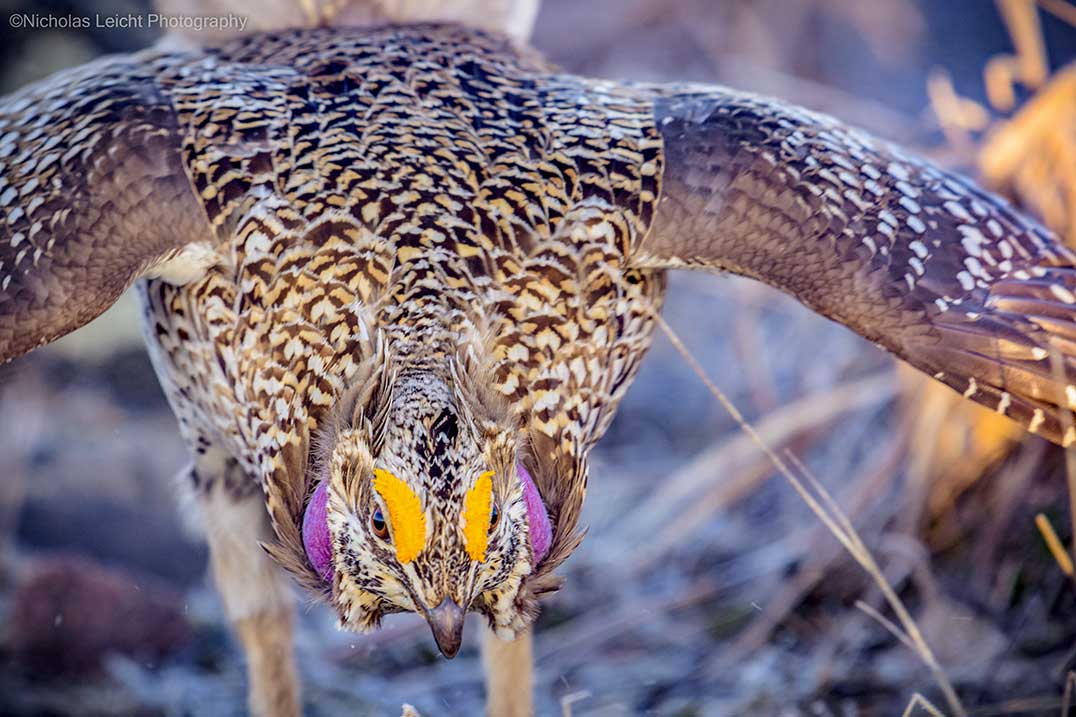MANITOULIN – The mating rituals of the sharp-tailed grouse are a somewhat rare sight in this part of North America, but after receiving a reliable tip, Orillia-based photographer Nicholas Leicht made a trip to Manitoulin Island recently to capture spectacular photos and video of the males of the species vying for dominance of their territory and the attention of the females.
“It’s hard to explain in words the experience. It’s something like I’ve never experienced before,” said Mr. Leicht.
Sharp-tailed grouse gather every spring in areas called ‘leks,’ with the word lek also referring to a gathering of male animals for the purposes of mating and dominance. The activities the birds undertake are known as ‘lekking.’ Their activity peaks in the early hours of the day and by sunrise they are already beginning to grow more docile, meaning this behaviour is something few people will get the chance to witness.
Mr. Leicht had originally planned to photograph the sharp-tailed grouse and prairie chickens at Valentine National Wildlife Refuge in Nebraska, but poor weather resulted in the cancellation of those plans.
“I still wanted to have that experience, so I was looking around for areas that I could photograph sharp-tails. However, there weren’t too many places. I managed to get in contact with someone that said they had sharp-tailed grouse in the area, so that’s where I went. It just happened to be on Manitoulin Island,” said Mr. Leicht.
Manitoulin is at the far eastern boundary of the sharp-tailed grouse’s habitat range, depending on the source of the distribution map. Leks in this area are therefore quite rare and Mr. Leicht said he was sworn to secrecy regarding its particular location. This lek was quite remarkable in its size—there were close to 100 grouse gathered in the area, according to Mr. Leicht.
After driving the four hours between Orillia and Manitoulin Island, Mr. Leicht set up a portable blind at the lek, similar to one that a hunter may use. He marked the location on a GPS unit so he could navigate his way through the foggy black night and set an alarm for the following day at 3 am. He had reached the blind and was ready to observe the grouse by 5:30.
He heard the birds arrive in one big group despite not being able to see them. Their sounds steadily grew closer until the first rays of dawn revealed their distant outlines. As soon as it was light enough to snap off some photos, Mr. Leicht had both his cameras out in action.
“The first thing the males do is establish their territory,” said Mr. Leicht. “They guard their territory from other male grouse. Females wander wherever they want and occasionally a male will chase another and fly off.”
He remarked that the birds were often more focused on their fellow males and defending their territory than they were interested in the female birds. The vigorous fighting displays in which they engage are often extremely strenuous – so much so that few males survive longer than two years, according to Mr. Leicht.
“There were no sharp-tails anywhere on Manitoulin Island before 1932. They invaded from Northern Ontario and, by 1960, they occupied the entire Island,” he stated.
Photographing wildlife in all its natural glory is a favourite activity for Mr. Leicht and what drew him to photography initially. The 21-year-old is self-taught and mainly focuses on wedding and portrait shoots to pay the bills, with plans on developing a marketing company for small businesses in the Orillia area. He also produces videos and will be releasing some of his footage of the sharp-tailed grouse lek in the coming week.
“With video, you get the opportunity to share more of the details, or more of the experience, rather than just a single frame of the moment. You get to share the whole moment,” said Mr. Leicht.
Although he has photographed ruffed grouse in the past, Mr. Leicht said this was a unique experience.
“I set up a makeshift blind in the forest and the ruffed grouse would be jumping on logs, drumming, flapping their wings up and down, and you can hear that in the spring and fall. But that’s only a single grouse displaying on its territory. This was 50 or more—it was phenomenal. Breathtaking, really. I hope through the pictures and video I captured that day, I can share part of that experience with people,” he said.
Interested readers may view a short teaser excerpt of the video on Mr. Leicht’s Twitter page at twitter.com/NicholasLeicht. That’s the same place where he will be sharing the full version soon. https://twitter.com/NicholasLeicht/status/1121059816691109888








